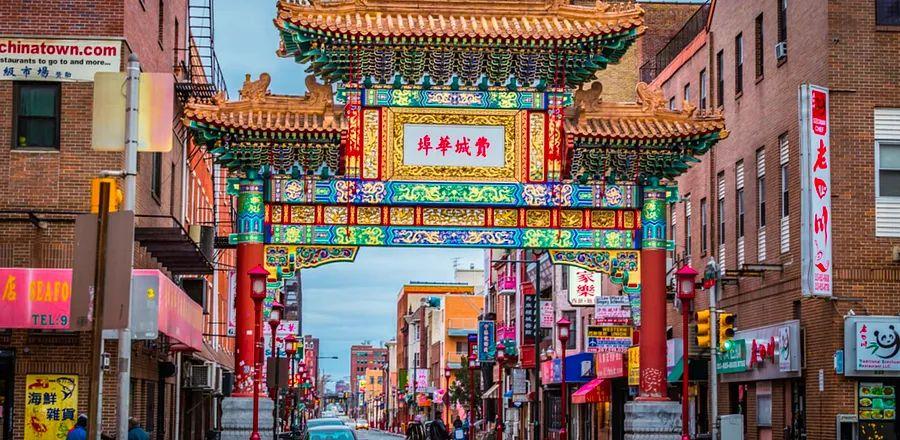These Historic Sites in the U.S. Face the Risk of Disappearance

A new listing of the 11 most endangered historic sites in the United States includes two Chinatowns, a duo of iconic skyscrapers, and a rural gas station. This annual list is produced by the National Trust for Historic Preservation, a nonprofit dedicated to protecting U.S. historic locations and highlighting those that hold significance in the nation's narrative yet are threatened with loss.
According to Jay Clemens, interim president and CEO of the National Trust, “This year's selection of the most endangered historic sites showcases a range that mirrors the diversity of the American experience. The varied sites featured on the 2023 list—and the narratives they carry—illustrate the complexities and challenges inherent to American identity, which often go unacknowledged. Losing any of these sites would be a loss for us all.”
Historic Sites Featured on the 2023 Endangered List
This year's endangered list includes two Chinatowns located on opposite coasts: Philadelphia's Chinatown, which has a history spanning over 150 years, and Seattle's over century-old Chinatown-International District. Both neighborhoods are facing potential development pressures—the Philadelphia 76ers basketball team has proposed a new arena near Chinatown, while Seattle's Sound Transit is considering transit expansion plans that may affect access to these areas.
Several sites at risk highlight the narrative of Black history in the United States. One such site is the Pierce Chapel African Cemetery in Midland, Georgia, established in 1828 as one of the oldest burial grounds for enslaved individuals, which has unfortunately fallen into disrepair. Another is the Holy Aid and Comfort Spiritual Church in New Orleans, which has suffered from hurricane damage. Additionally, the west bank of St. John the Baptist Parish in Louisiana serves as a critical area for historians studying former enslaved communities along the Mississippi River. Two homes of globally recognized Black artists are also at risk of demolition due to deteriorating conditions: the L.V. Hull Home and Studio in Kosciusko, Mississippi, and the Henry Ossawa Tanner House in Philadelphia, Pennsylvania.
The Osterman Gas Station in Peach Springs, Arizona, a nearly century-old establishment on Route 66, has long served as an informal meeting spot for the Hualapai Tribal community, which now owns it and is striving to revitalize the site. It has made the endangered list due to the urgent need for “stabilization and rehabilitation to continue serving its community and future generations of travelers.” Similarly, Miami’s Little Santo Domingo neighborhood, home to many Caribbean and Latin American residents, faces threats from development pressures resulting in “displacement, demolition, and rising rents.”
Also included in the list are the Century and Consumers Buildings, two historic skyscrapers on Chicago’s State Street (erected in 1916 and 1913, respectively) that have remained vacant since 2005, and the Historic Neighborhoods of Charleston, South Carolina, featuring a 65-acre waterfront area that could lose its historic character if sold to private developers, as proposed by the current owner, thus threatening the community’s views and climate resilience.
The significance and history behind the endangered list
“The 11 Most Endangered list exemplifies the profound impact of place. Each site provides a chance to connect with our collective history and motivates us to collaborate in honoring the diverse experiences and contributions that shape our nation,” stated Katherine Malone-France, chief preservation officer of the National Trust for Historic Preservation.
Since its inception in 1988, the list has consistently featured 11 endangered historic places, chosen from public nominations. Over the years, the organization has highlighted more than 350 sites, including Governors Island in New York City, President Lincoln’s Cottage, and Nashville’s Music Row. While these sites often confront various challenges to their preservation, being included on the list can prove beneficial. The increased visibility often translates into funding and support for preservation efforts.
To commemorate the 30th anniversary of America’s 11 Most Endangered Historic Places list in 2017, the organization chose to honor “once-endangered sites that are now flourishing and contributing positively to their communities.” Featured sites included the Penn School, the first institution in the South dedicated to the education of African Americans; Angel Island Immigration Station, often referred to as the “Ellis Island of the West,” which served as the entry point for Pacific Rim immigrants; and Travelers’ Rest, the only archaeologically confirmed campsite of Lewis and Clark. Today, Travelers’ Rest is a protected state park, while the other two have become museums.
In a recent interview with NPR, Malone-France mentioned Camp Naco in Bisbee, Arizona, as a prime example of how being listed can galvanize community support.
“The camp was decommissioned in 1923 and encountered numerous challenges, including vandalism, exposure, erosion, and fire,” Malone-France explained in the interview. “However, for the past 20 years, a dedicated group of local advocates has fought for this site. We included it on the 2022 list, and since then, over $8 million in grants have been allocated to Camp Naco, facilitating its restoration and community programming.”

1

2

3

4

5
Evaluation :
5/5